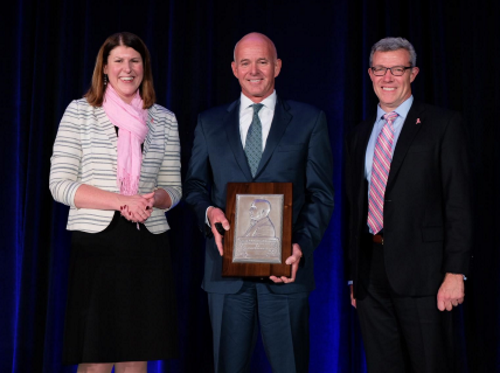Selma Hepp (seen above) – executive of research and insights and deputy chief economist for housing market data provider CoreLogic – recently explained how shifts in the housing market in part due to the COVID-19 pandemic could impact transportation planning in the near future.
Speaking at the American Association of State Highway and Transportation Officials annual meeting in San Diego, Hepp said that consumers “spent differently” during 2020 due to the purchase of new homes in or in many cases second homes.

“That increased sales of durable goods,” she explained, as they purchased new appliances, furniture, and other large items in numbers outside the typical norms.
“That represented a lot of the demand coming into the market,” Hepp pointed out. “There was a big pickup in second home purchases during the pandemic – an increase of 100 percent between 2019 and 2020, particularly in the summer [of 2020]. And that helped drive up prices of durable goods.”
The lowest availability of homes available for sale in decades is exacerbating the problem, helping force the cost of housing higher across the country in many markets not used to seeing such price appreciation.
“In every decade since 1960, there’s been much more population growth versus housing unit growth,” Hepp noted. “Since 2000, the U.S. population has increased by 47 million people but housing only expanded by 21 million units. On average, there are 1.9 million housing units available – but below it is now below one million at the moment.”
She added that currently six out of every 10 homes sold is going for over the asking price – a rate that historically is just two out of 10. “And it is still not letting down. Every indicator we look at shows a continued home buying frenzy,” Hepp said. “The growth in home prices averages 5 percent per year, but last year it tripled 14.5 percent – and is now hitting 18 percent to 30 percent.”
The shift by millions to a “work from home” environment due to COVID-19 may also create long-term effects in both the residential housing market and commercial real estate market as well.
“When the pandemic started, demand for single family homes doubled in relation to condominiums,” Hepp said. “Demand soared for single detached homes with more space around them. That also meant people left larger, denser areas with higher house costs for lower density and lower cost areas with warmer weather, as well as areas with low to no state income tax.”
While much of that started happening prior to pandemic, COVID-19 accelerated that trend. “Then there is the long-term impact of remote work,” she said. “Surveys indicate 20 to 25 percent of current workers plan to work from home full- or part-time going forward, reducing the need for commercial building space. And that in turn could reduce spending in major city centers by 5 to 10 percent down the road.”
 AASHTO Annual Meeting
AASHTO Annual Meeting


